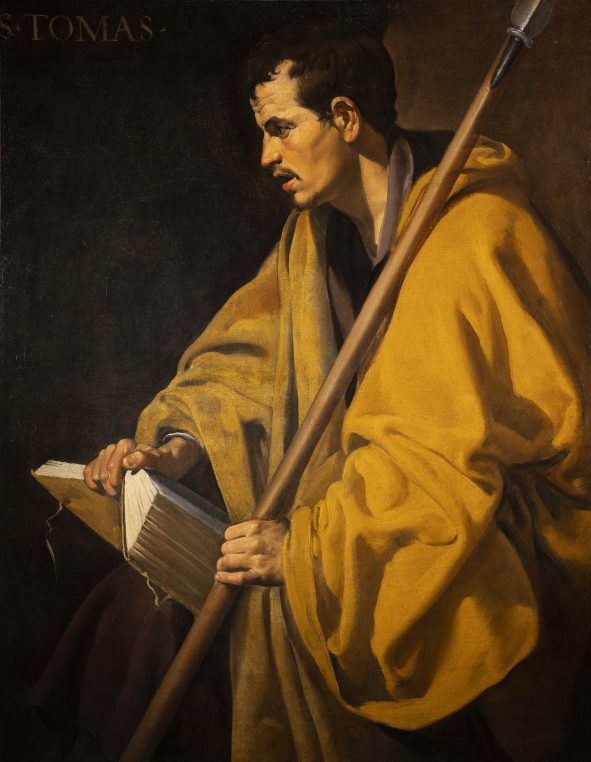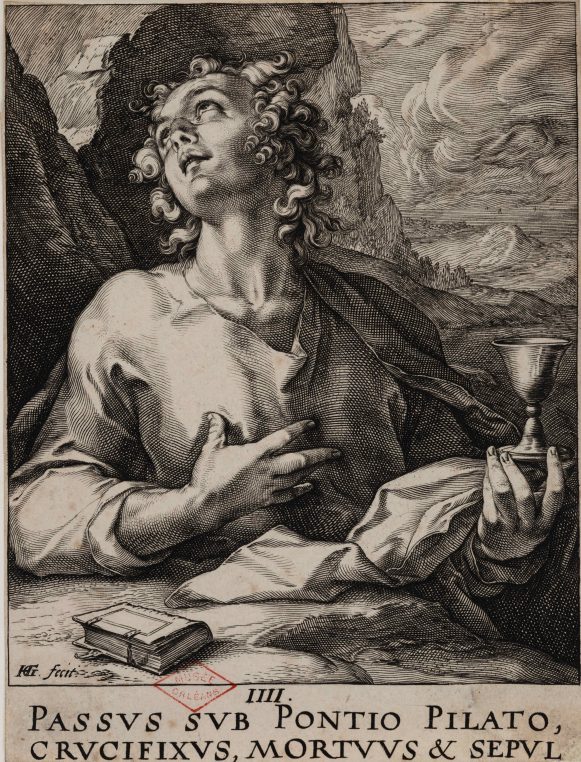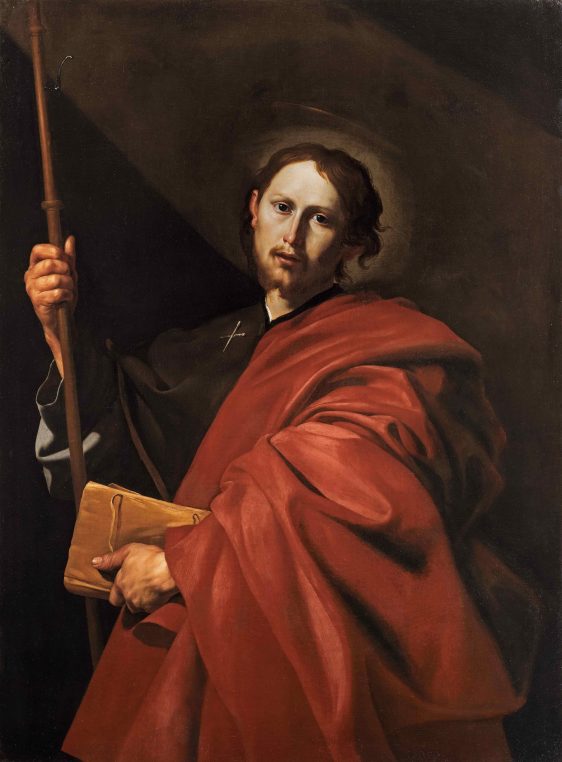It all started because the town of Orléans on the Loire river (116 000 inhabitants) is one of the two only places in France (with Rouen) to own a painting by Spanish painter Diego Velazquez. The Musée des Beaux Arts is one of the richest in France due to large donations in the 19 th century, and it is well worth taking the one hour train ride to visit it on the occasion of the new exhibition “On the track of Velazquez’s St Thomas” curated by the very young Corentin Dury and with Guillaume Kientz’s expertise and writings. Thanks to the museums of Barcelona and Sevilla, there are three apostles, St Paul, St Thomas and another head by the master, united in what the curator calls the Apostolado, a word used by El Greco to describe a series of portraits of the apostles. Jusepe di Ribera, Luis Tristan and Francisco Pacheco surround the young Velazquez who painted this portrait while still living in Sevilla before 1623.
Velazquez apprenticed at 11 with Francisco Pacheco in Sevilla. At 18, he married his daughter Juana, before moving to the court of Philipe IV where he would paint the famous portraits kept at the Prado. The museum in Orléans owns 20 000 drawings and 50 000 prints, some of which are still fairly unstudied and Dury used these precious archives to research the background of the painting. After writing his dissertation on the “Trecento” with Michel Laclotte, he worked in Le Mans and at Port Royal des Champs where he inaugurated a drawing season. Like some of his contemporaries Matthieu Deldicque and Florentin Gobier, he belongs to a generation of passionate art historians who trained at Ecole du Louvre and have enough energy to overcome the former lethargy of French museums. With his director, Olivia Voisin, one of the most celebrated museum ladies in France, they form an excellent team.
One has to realize how International Sevilla was at the time. It was the harbor for departing to America but also to Naples, Florence and Genoa. Flemish merchants would transit in Sevilla. And the whole of Europe met in this small city. But Velazquez was unknown to the French until Napoleon imported Spanish paintings in his Plundering manner. In 1838, Louis Philippe created the Spanish gallery at the Louvre while Victor Hugo celebrated Zurbaran.
In the archives of the museum, the St Thomas is first listed in 1843 as a Murillo. He and Ribera were the first Spanish painters to be known in France at the time, but writer Théophile Gautier will be one of the first to admire Velazquez. And while this St Thomas was, for 100 years, considered to be a work by Murillo, it will be properly attributed by Italian art historian Roberto Longhi (1890-1970) in 1920! He immediately published an article on it. This discovery created such a tsunami in the art world that the Louvre immediately offered to acquire it from the Orléans museum… But he offer was refused.

Gerard Seghers, St Peter Penitent, ca 1617-1620, Musée du Louvre. Another version of this painting was in the cathedral in Sevilla before 1620
A whole room is dedicated to the radiography and infra red studies of the painting along with a few others from the same period. One particularity appears clearly: Velazquez did not use repentirs (corrections). And his paint was very “couvrante”. Very clear.
A première to be celebrated is the loan of Luis Tristan’s St Matthias by King Felipe of Spain. It has never been shown before to the public outside the King’s palace. The Saint Matthew by Jusepe de Ribera was lent by Musée de Rennes, another prestigious collection run by a dynamic curator, Guillaume Kazerouni. And one of Roberto Longhi’s painting, St Jude Thaddeus by Ribera, is also present in the show.
This is a small and intense exhibition but so interesting in terms of art history. The collections of the museum have been reorganized and it is a beautiful experience to wander around its 17 th to 19 th century galleries.
Provincial museums in France are very rich thanks to private collections which were bequeathed in the 19 th century. And this exhibition is going to put Orléans on the map for the summer (and until November 14). Make sure to visit it on your way to the Loire Valley…
From September 18, “Ingres before Ingres, drawing before painting” will also be open. Musée d’Orléans until November 14. Closed on Mondays.
Share this Post






One Comment on “In Orléans, youth brings a new image of Velazquez.”
Breathtaking ! Quel bonheur de renouer avec la troublante et passionnante beauté !
Merci, Laure, de nous faire partager tes merveilleuses découvertes !
Amitiés, Isabelle